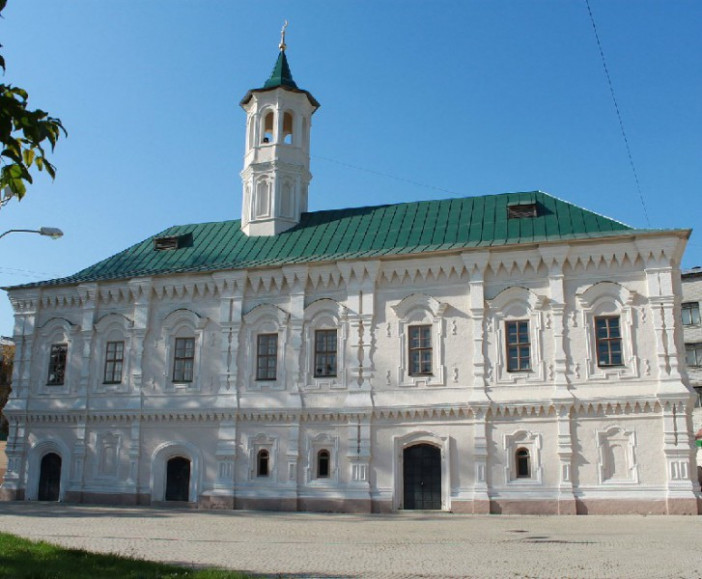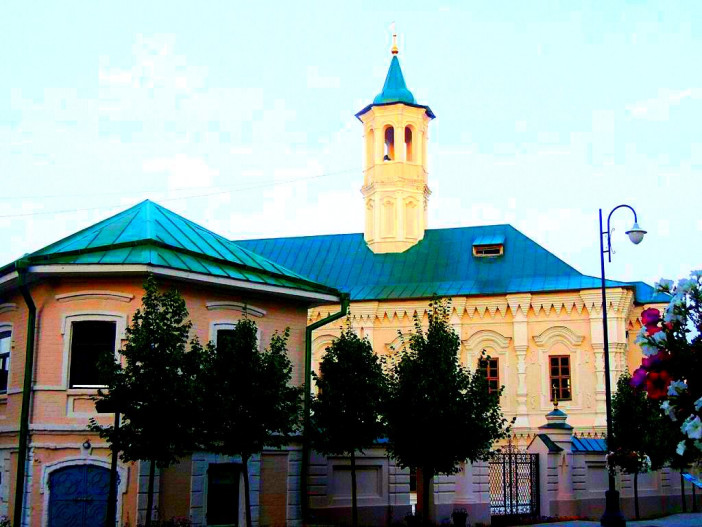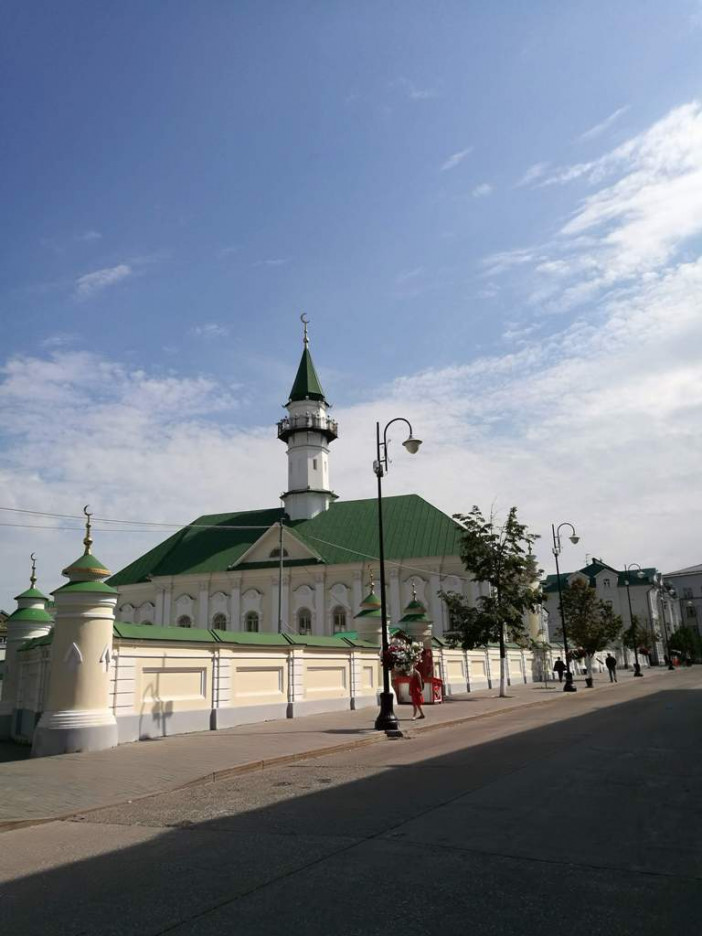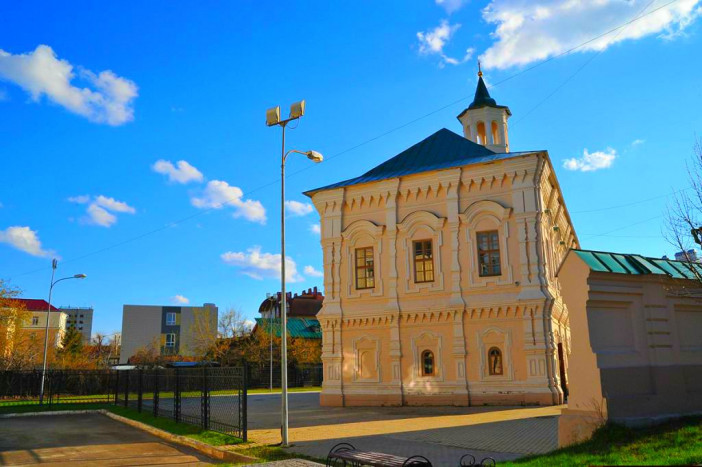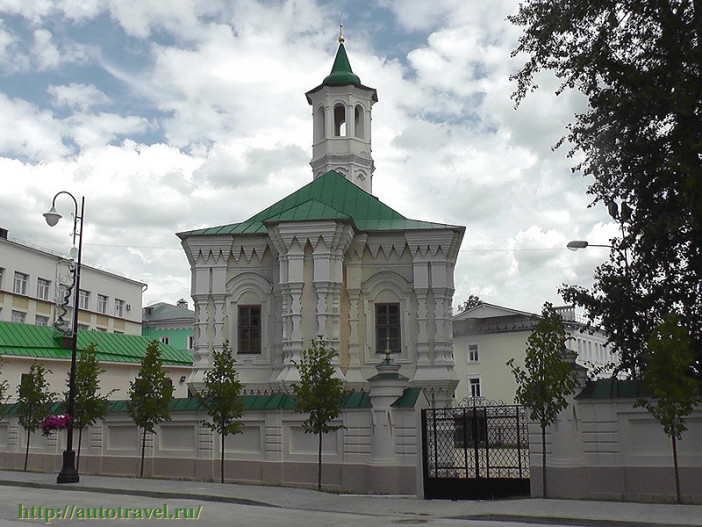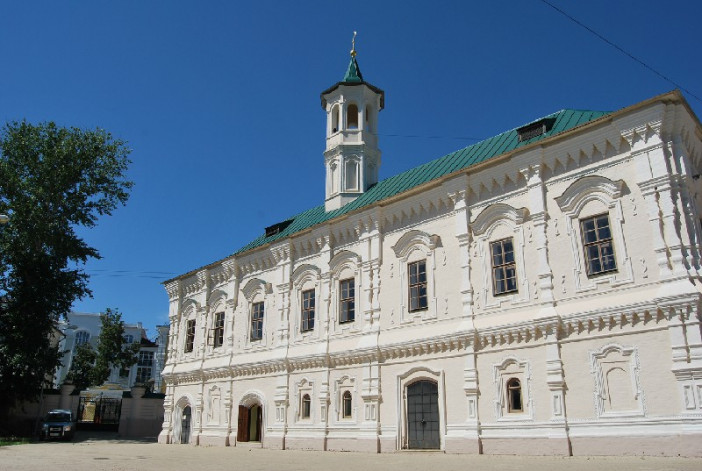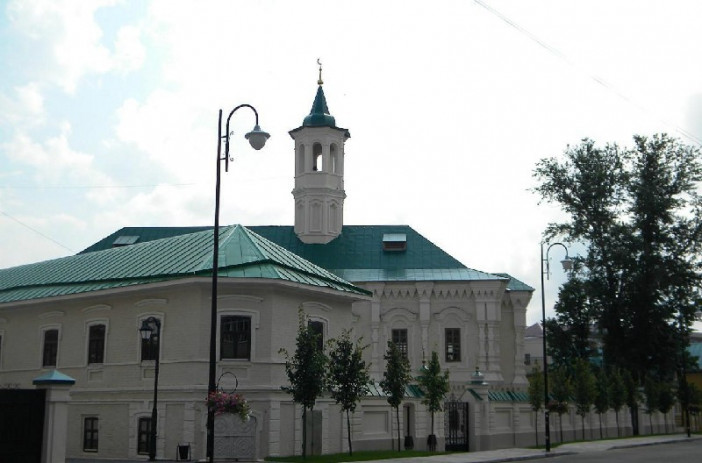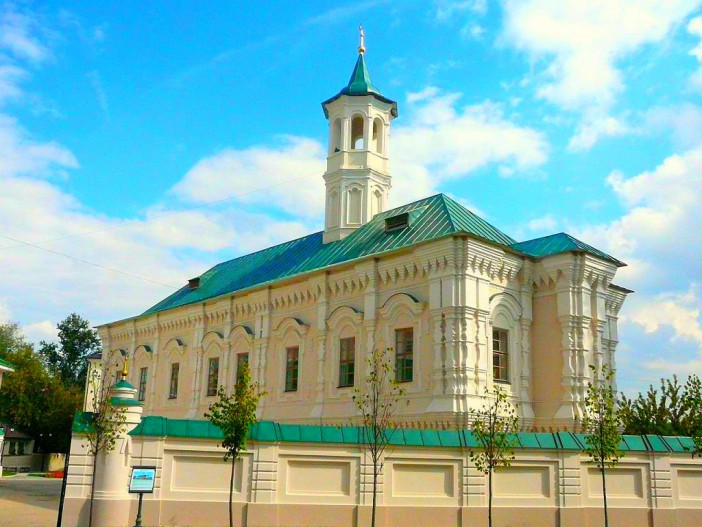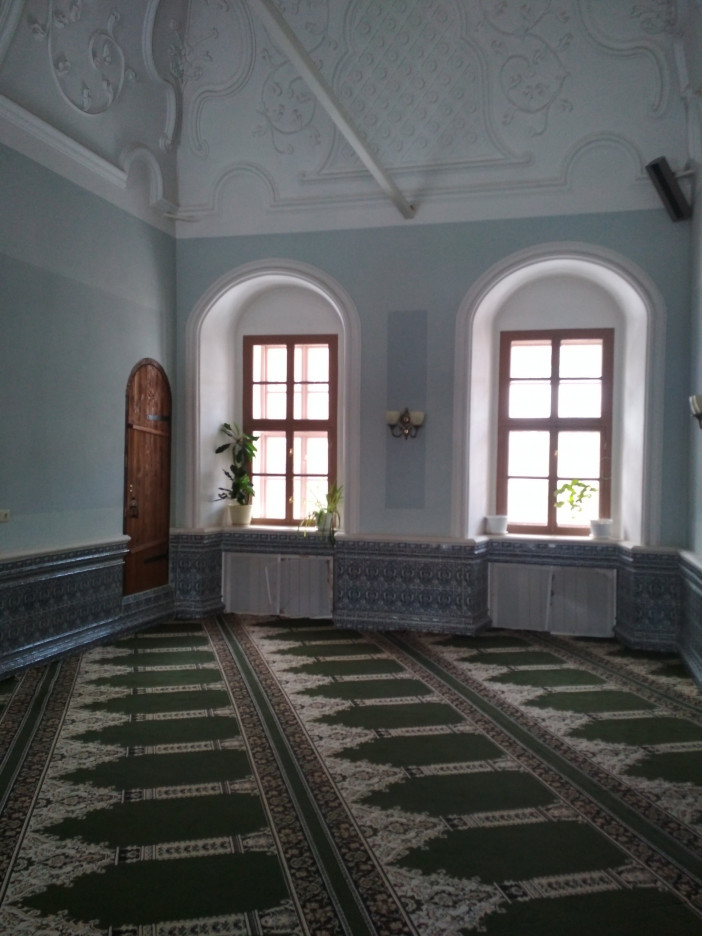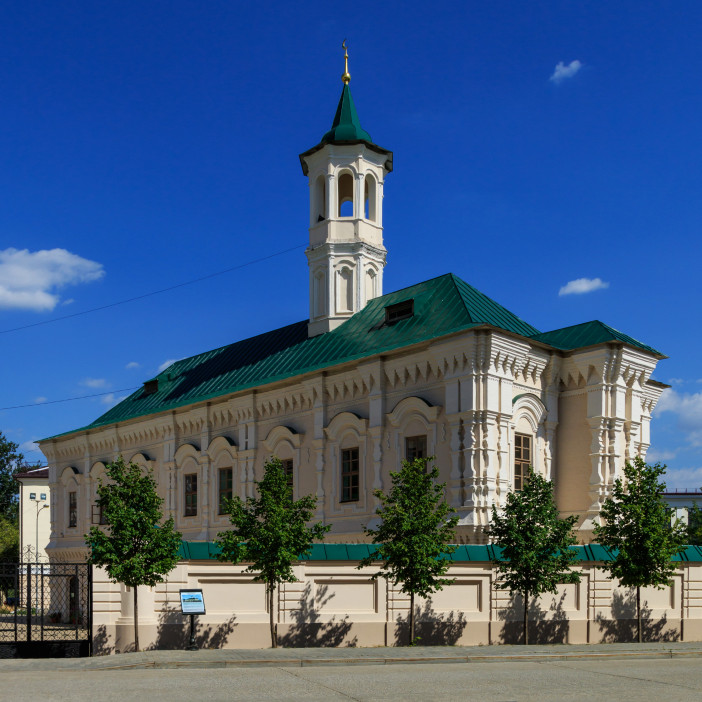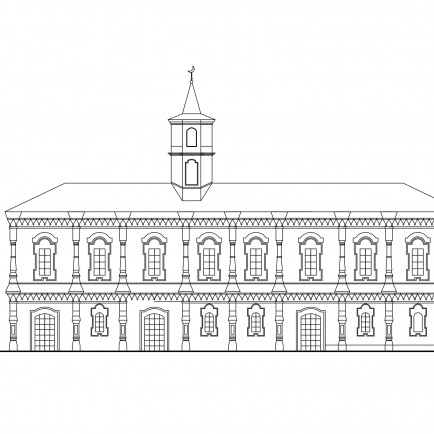Apanaevskaya Mosque
History
Apanaevskaya Mosque (Second Cathedral, Baiskaya, Cave, Tat. Apanay məçete, Apanay məchete) is a mosque in Kazan, a monument of Tatar religious architecture. It is located in the Old Tatar Sloboda. It was built at the expense of the Tatar merchant Yakub Sultangaleev in 1768-71. after the leaders of the Muslim community of Kazan obtained permission from Empress Catherine II to build two stone mosques to replace those destroyed by the decree of Empress Anna Ioannovna and burned down (the second is modern al-Marjani).
Urban and Architectural
The architect who built the Apanaevskaya mosque is unknown to historians, the style of the building combines elements of Russian baroque with a pronounced "capital" accent and traditional Tatar architecture. Initially, the temple consisted of one hall and an octagonal minaret, however, in the early 70s of the 19th century, the appearance of the mosque was significantly changed by the architect P.I. Romanov: an extension with a two-story staircase was erected in the northern part of the temple, the appearance of which, however, did not contrast with the original buildings at all. In addition, at the junction of the old and new premises, a two-tiered minaret, identical to the previous one, was re-erected. In total, about 5,000 rubles were spent on the expansion of the mosque, and an impressive amount was entirely collected by the residents of the mahalla.
By the end of the 19th century, the Apanaevskaya Mosque had a high status as the Second Cathedral Mosque and experienced a period of prosperity and prosperity. The quiet life of the local Muslim community ended in 1930, when the temple was closed by the decision of the Presidium of the Central Executive Committee. After some time, the building underwent a “re-planning”: the minaret and vaults of the mosque were destroyed, all the decor was carefully knocked down and hewn, and the interior was divided into three floors, which soon housed a kindergarten.
The restoration of the temple began quite late - in 2007 and continued until 2011. The complex restoration made it possible to restore the facade of the mosque to its former appearance, as well as to restore the division of the internal volume of the building into two floors. In addition, the minaret was recreated with maximum accuracy. The restoration of the interior of the Apanaevskaya mosque is currently underway, but has not been completed to date. The temple is protected as an object of cultural heritage and a monument of religious Tatar architecture of federal significance.
Description
The mosque consists of one minarite.
References
https://vk.com/wall-62499352?offset=80
https://www.vipgeo.ru/countries/russia_showpl/kazan/apanaevskaya_mechet.html
Details
Location
Ulitsa Kayuma Nasyri, 29, Kazan, Republic of Tatarstan, russia، 420100
Year of Build
1768-1771
Drawings
Map
History
Apanaevskaya Mosque (Second Cathedral, Baiskaya, Cave, Tat. Apanay məçete, Apanay məchete) is a mosque in Kazan, a monument of Tatar religious architecture. It is located in the Old Tatar Sloboda. It was built at the expense of the Tatar merchant Yakub Sultangaleev in 1768-71. after the leaders of the Muslim community of Kazan obtained permission from Empress Catherine II to build two stone mosques to replace those destroyed by the decree of Empress Anna Ioannovna and burned down (the second is modern al-Marjani).
Urban and Architectural
The architect who built the Apanaevskaya mosque is unknown to historians, the style of the building combines elements of Russian baroque with a pronounced "capital" accent and traditional Tatar architecture. Initially, the temple consisted of one hall and an octagonal minaret, however, in the early 70s of the 19th century, the appearance of the mosque was significantly changed by the architect P.I. Romanov: an extension with a two-story staircase was erected in the northern part of the temple, the appearance of which, however, did not contrast with the original buildings at all. In addition, at the junction of the old and new premises, a two-tiered minaret, identical to the previous one, was re-erected. In total, about 5,000 rubles were spent on the expansion of the mosque, and an impressive amount was entirely collected by the residents of the mahalla.
By the end of the 19th century, the Apanaevskaya Mosque had a high status as the Second Cathedral Mosque and experienced a period of prosperity and prosperity. The quiet life of the local Muslim community ended in 1930, when the temple was closed by the decision of the Presidium of the Central Executive Committee. After some time, the building underwent a “re-planning”: the minaret and vaults of the mosque were destroyed, all the decor was carefully knocked down and hewn, and the interior was divided into three floors, which soon housed a kindergarten.
The restoration of the temple began quite late - in 2007 and continued until 2011. The complex restoration made it possible to restore the facade of the mosque to its former appearance, as well as to restore the division of the internal volume of the building into two floors. In addition, the minaret was recreated with maximum accuracy. The restoration of the interior of the Apanaevskaya mosque is currently underway, but has not been completed to date. The temple is protected as an object of cultural heritage and a monument of religious Tatar architecture of federal significance.
Description
The mosque consists of one minarite.


